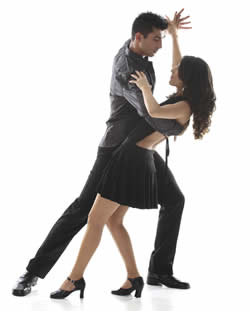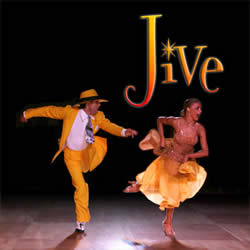Difference between Salsa and Jive Dance
Key Difference: ‘Salsa’ is a category of a stylized Cuban rhythmic dance with the elements of rock and soul music. It originated in the early 1920s. On the other hand, ‘Jive’ is one type of ballroom dancing and was developed in the United States by the African-Americans in the early 1930s.
Today’s generation is very advanced in every field; either it is about new technology or any social or cultural activity. Studying and becoming an expert in it is not their singular goal. They want to explore more and want to learn one basic activity and that is ‘dance’. Salsa and Jive are two forms of dances where today’s generation has a desire to learn.
 ‘Salsa’ is a category of a stylized Cuban rhythmic dance with the elements of rock and soul music. The style of salsa dancing involves significant movement above the waist, with up-and-down shoulder movements and shifting of the chest. Salsa has a pattern of six steps danced over eight counts of music. The dance has many moves and one should have a correct posture and flexibility in. The arms play the most important role in Salsa; as it allows or gives signal to the follower to either move in an open or closed position. Salsa can be performed as a partner or one can perform alone.
‘Salsa’ is a category of a stylized Cuban rhythmic dance with the elements of rock and soul music. The style of salsa dancing involves significant movement above the waist, with up-and-down shoulder movements and shifting of the chest. Salsa has a pattern of six steps danced over eight counts of music. The dance has many moves and one should have a correct posture and flexibility in. The arms play the most important role in Salsa; as it allows or gives signal to the follower to either move in an open or closed position. Salsa can be performed as a partner or one can perform alone.
Usually a partner dance, salsa is a very flirtatious dance by nature. Salsa dancing is more of an international dance, it is seen in metropolitan cities and all over the world. It is more commonly danced in nightclubs, restaurants, casino or pubs. The basic footwork requires a lot of rapid transition when transferring the weight of the body from one foot to the other. The basic of any partner work is the forward and the backward movement. The partners need to be very alert when they are performing. Before performing a salsa dance, one needs to master in it. They need to learn the basic steps and understand each and every technique.
The salsa can be danced in either a closed dance position or hand-in-hand.
According to wikihow.com, there are various steps through which a Salsa dancer can certainly master the stance:
1. In the closed dance position, the lead takes his partner's right hand in his left and places his right-hand on her left shoulder blade. The partner should keep her left hand on his right shoulder, with her arm over his.
2. In the hand-in-hand position, the lead has his palms facing upwards, and the partner takes his hands with her palms down. This allows for more freedom of movement.
3. Have good posture. When dancing, you should always keep your spine straight and your shoulders back.
4. Always look up. Keep your had held up or tilted to look at your partner. Do not look at your feet or your partner's.
5. Move your hips. Most of the movement in the Salsa comes from the hips, so you will want to keep your hips loose. Don't be afraid to sway your hips.
6. Keep your arms bent at a 90 degree angle from the elbows. In this position, your hands are most easily accessible to your partner.
 On the other hand, the Jive dance is a fast and very spirited Latin dance. The sounds emerged are of rock and roll and there are very complicated methods to do this form of dance. The basic foot pattern for this dance is “6” counts. It is helpful to remember the pattern in your head as you move your feet. There are 6 counts to the basic movement, and the beat sounds like: 1-2-3-a-4, 5-a-6. Counts 1 and 2 are called "rock steps," counts 3 and 4 are a triple step to the left called a "chasse," and counts 5 and 6 are a triple step, or "chasse" to the right.
On the other hand, the Jive dance is a fast and very spirited Latin dance. The sounds emerged are of rock and roll and there are very complicated methods to do this form of dance. The basic foot pattern for this dance is “6” counts. It is helpful to remember the pattern in your head as you move your feet. There are 6 counts to the basic movement, and the beat sounds like: 1-2-3-a-4, 5-a-6. Counts 1 and 2 are called "rock steps," counts 3 and 4 are a triple step to the left called a "chasse," and counts 5 and 6 are a triple step, or "chasse" to the right.
According to wikihow.com, there are certain steps which a Jive dancer should follow:
1. Face your partner. Have the man take the woman's right hand, and hold it loosely. The man will begin the dance by moving his left foot, and the woman will follow movement.
2. Step backward with the left foot for the first count in the rock step. Leave your right foot in place, and shift your weight back to it for count 2 of the rock step.
3. Step to the side with your left foot for count 3, or the first count in the chasse step.
4. Move your right foot to your left foot, closing the gap, for the "a" step of the chasse.
5. Step to the side again with your left foot for step 4. Leave your right foot in place.
6. Shift your weight to the right foot in step 5, which begins the chasse to the right.
7. Sidestep to the right with your left foot, which is step "a."
8. Sidestep to the right with your right foot for step 6 of the jive count.
In both, apparels play a very important role. It should be a silky kind of a material like Nylon. Most of the time in these kinds of dances incidents happens, just to avoid that situation one should be aware about their garments.
Though, Salsa and Jive are one of the forms of Latin dance but they have different patterns, techniques and ways of dancing. Salsa is a fast and flexible way of dancing whereas; Jive is most directly related to Swing. It contains bouncy rhythms and easy melodies.
Image Courtesy: tdijodhpur.com, dancesportindia.com









Add new comment